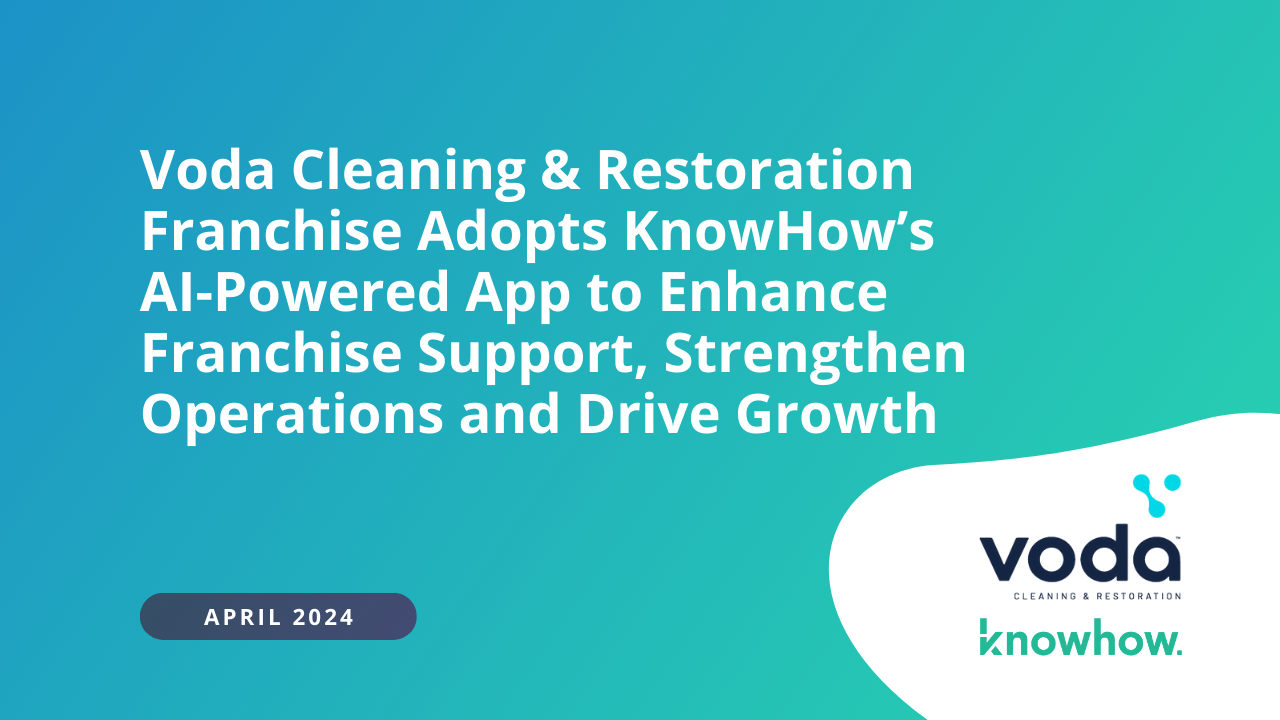
Why Investing in Customer Experience Can Catapult Your Restoration Business to the Top



When a customer is looking for restoration services, there’s a high likelihood that they aren’t in a good mood. Chances are they just lost their home, personal belongings, and will likely be displaced for months on end. Restoration businesses often overlook this, and fail to recognize that their customers need to be understood and listened to before jumping into the project details and potentially worst of all, payment.
This is where customer experience comes in. For far too long, the restoration industry has ignored the customer journey when having world class customer experience can separate you from almost every other restoration company in your area. When customers trust that they’re getting the best possible experience from start to finish, they are more likely to refer you to family and friends when they need a restorer. Investing in your business's customer experience is one of the best things you can do if you want to increase revenue, and maximize five-star reviews.
In episode two of our Five Star Restorer Webinar Series we hosted Liliana Petrova, a customer experience visionary with decades of experience transforming companies into industry titans through her customer experience consulting at her firm “The Petrova Experience”. As the former Director of Customer Experience at JetBlue, Liliana was responsible for cutting wait times in airport terminals from 15 minutes down to 2 minutes, and turning JetBlue into the billion dollar company it is today.
How to Improve Customer Experience in Restoration Webinar
The Difference Between Customer Service & Customer Experience
Many restoration businesses tend to assume customer service is the only branch under the customer experience canopy, when in reality, customer experience is so much more. In order to begin to master customer experience in your business, it’s important to understand the difference between the two, and be aware that there is so much more to the customer journey that determines if your customer is satisfied or not.
While customer service is a subset of the customer experience, it’s not the entire piece of the pie, which many business operators mistakenly assume it is. Customer service, as Liliana refers to it, is “The birthplace of customer experience”, in that it really stems from the old days when human interaction was the only way customers interacted with a business. One can say that customer service is any in-person touchpoint a customer has with your employees; call centers, interactions on the job-site with field workers, accounting, etc.
But in the 21st century, customers can interact with your business in so many different ways. Making a payment online, navigating your website, discovering your business through Google, interacting with your posts on social media - these are all examples of customer experience. As Liliana puts it, “Customer experience is the science behind the orchestra in the backend that creates unity”. Customer experience is really what goes on behind the scenes with the non-interactive touchpoints your customers have with your business. It’s the journey of these, from the first time a customer hears about your company, to the successful completion of a project, that make up the customer’s experience.
The Benefits of Taking Customer Experience Seriously
Taking customer experience seriously can make an impact in your business immediately. Here are a few of the benefits Liliana outlined specifically for the restoration industry:
Lower turnover
If you have great customer experience, your employees will feel it. They will no longer be in the line of fire anymore when it comes to angry customers not feeling cared for. Your company culture and morale will increase because employees will truly feel they are making a difference in people's lives and making them happy.
Efficiency
With an improved customer experience, the customer process from start to end will be better defined, and there will be less room for error. With less error, comes fewer delays and your jobs will become much more efficient.
An increase in profits
The above points will both lead to an increase in profits, as less employee turnover means less money spent on onboarding and quitting fees, and greater efficiency means more jobs completed each quarter. In addition, you’ll see an increase in revenue just based on word of mouth. A happy customer who had a great experience with your business is far more likely to recommend your business to a friend. Further, according to Liliana, “It is acceptable, and proven, that you can charge a premium for great customer experience”, which means you’ll be making more money per job.
Empathy Can be Awakened
Many restoration companies struggle with their employees not being empathetic enough towards their customers' struggles and situations. No matter what you do, your customer experience won’t be up to snuff unless your entire team is buying in. From office administration to technicians in the field. In order for them to buy in, empathy needs to be front of mind on every job. As Liliana puts it, “You’re not cleaning bathrooms, you’re not cleaning up debris, you’re restoring a person's life”.
The trick to instilling empathy is to get your staff to understand your customer's point of view. Take the time to capture the stories of your customers, both the positive stories and negative stories, from their perspective. Here are a few questions you can ask customers before or after a job:
- What was the incident that triggered the need for a restoration company?
- How did they feel at that moment?
- What was the process of finding a restoration company like? Easy? Or frustrating?
- What were their thoughts when you realized what the path to a fully-restored home would look like? Anxious, or relieved?
- How did they feel during the restoration process?
- Upon completion, would they recommend your company to others? Why or why not?
By getting your staff to put themselves in your customers' shoes, they will have a greater understanding of how they're feeling, and what they need to be aware of when interacting with customers.
The Role Processes Play in an Effective Restoration Customer Experience
Tightly defined processes help every member of your organization recognize what point a customer is at in the customer experience journey, and be able to more effectively anticipate their needs. This will result in more happy customers as you’ll have all your staff in alignment on what they need to do to make customers happy.
To have amazing customer experience job after job, consistency is key. This is where processes can give you a leg up. The last thing you want is one employee providing great customer service, and then the next making the customer feel like they’re a burden. One bad interaction could ruin a customer's experience with your entire business. Having well built, easily accessible, up to date processes in your organization will greatly reduce the possibility of inconsistency between workers. Let Knowhow’s team of experts help guide you on your journey to becoming a process-driven organization.
Temperature Check Your Customers
Great customer experience starts by looking at the data. The only way to understand what you need to do to improve your customer experience, is by following the data. How do you collect the data? You find a way to “temperature check” your customers. This means figuring out a way to quantify how your customers are perceiving your business.
The easiest way to get data on how your customers feel about your business is to ask them to complete short surveys at the end of the job that highlight questions about their experience. This will help you determine what areas of the customer journey need work, and which areas are working well. There are tons of free survey building websites out there like SurveyMonkey, or Surveybot.
Want to Improve Your Customer Experience? Here’s Where to Start:
Starting on the road to improving customer experience can be tricky. Especially if you don’t know where to start, or the specific areas of your business that are falling short in the eyes of your customers.
Liliana recommends starting with surveys, as you won’t know what you need to improve unless you have a benchmark to move up from. Start by surveying both customers and employees with something as simple as:
- Would you recommend us to a family member or friend?
This question will help you see where you stack up based on other companies. There is tons of data and research out there already that you can cross reference once you’ve collected the results to see how your company stacks up in terms of customer experience.
When surveying your employees, Liliana always asks the question:
- Do you see yourself working here next year?
This simple question will help you determine how your staff feel about the operations of the company. If your staff are unhappy, chances are your customers are unhappy because they’re dealing with unhappy employees everyday.
Finally, send someone through your entire process, sit with a customer from job start to job finish, and let them tell you from experience what you’re doing well, and what needs improvement. There’s no better way to know where to start than having someone be brutally honest about your company's customer experience.
While these are the many highlights Liliana and Leighton discussed in our most recent installment of The Five Star Restorer Podcast, there are loads more valuable pieces of information scattered throughout the webinar. If you’re serious about improving your customer experience, we highly suggest taking the time to watch the full webinar which can be accessed here.
Poor customer experience isn’t the only reason a customer would leave a one-star review. In fact, there are 5 other common reasons customers leave one-star reviews. To learn about these common mistakes, download our eBook “Delivering 5-Star Restoration Experiences.”









